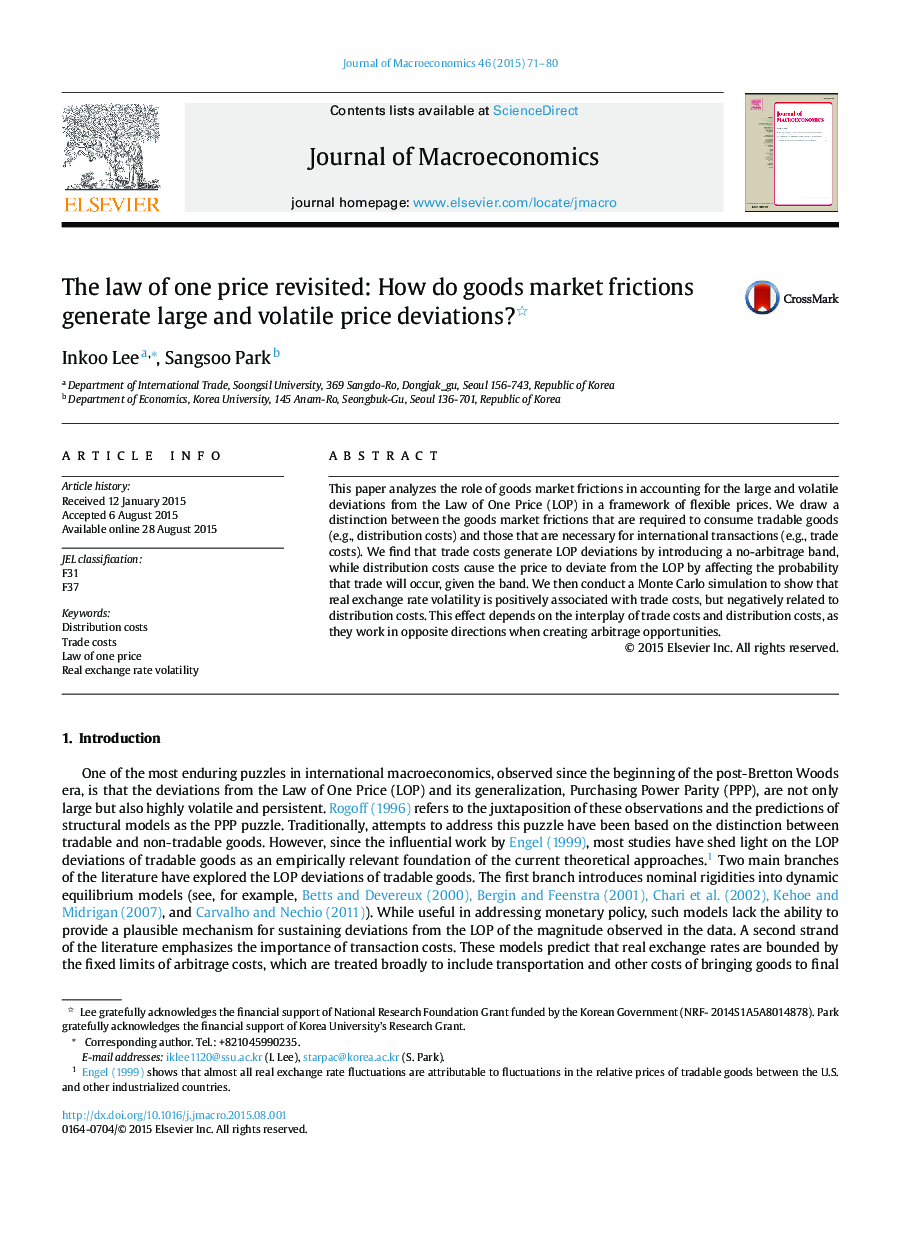| Article ID | Journal | Published Year | Pages | File Type |
|---|---|---|---|---|
| 965729 | Journal of Macroeconomics | 2015 | 10 Pages |
•We analyze the effect of goods market frictions on real exchange rate behavior.•We draw a distinction between distribution costs and trade costs.•Trade costs generate LOP deviations by introducing a no-arbitrage band.•Distribution costs cause LOP deviations by affecting arbitrage opportunities, given the band.•Real exchange rate volatility positively responds to trade costs, but negatively to distribution costs.•This effect depends on the interplay of trade costs and distribution costs.
This paper analyzes the role of goods market frictions in accounting for the large and volatile deviations from the Law of One Price (LOP) in a framework of flexible prices. We draw a distinction between the goods market frictions that are required to consume tradable goods (e.g., distribution costs) and those that are necessary for international transactions (e.g., trade costs). We find that trade costs generate LOP deviations by introducing a no-arbitrage band, while distribution costs cause the price to deviate from the LOP by affecting the probability that trade will occur, given the band. We then conduct a Monte Carlo simulation to show that real exchange rate volatility is positively associated with trade costs, but negatively related to distribution costs. This effect depends on the interplay of trade costs and distribution costs, as they work in opposite directions when creating arbitrage opportunities.
